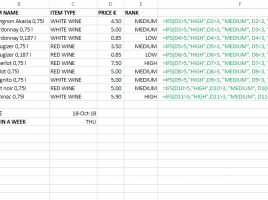
Search by part of the name
Many years ago I worked for ECOFINANCE company where, at my time, I wrote an Excel invoicing application. It seems to me that it was quite easy to use. Partly because it was enough to enter part of the name of the code or product to find the desired item. The seller would then only select the quantity and packaging and could quickly continue to enter items until the document is completed. Today this can be achieved much easier, without any VBA programming …




